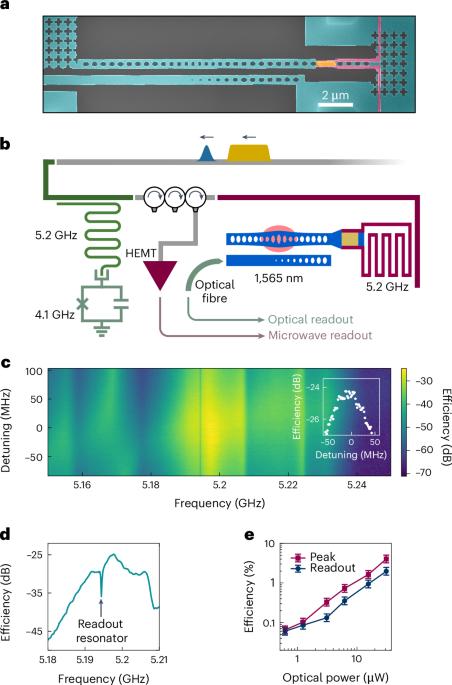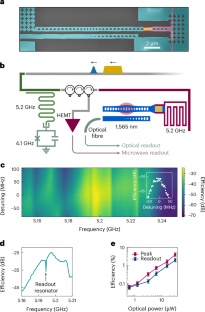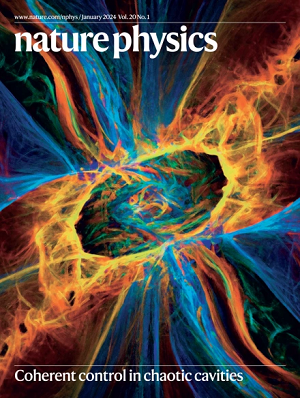使用压电光机械传感器的超导量子比特的光学读出
IF 18.4
1区 物理与天体物理
Q1 PHYSICS, MULTIDISCIPLINARY
引用次数: 0
摘要
超导量子处理器在尺寸和计算潜力方面取得了重要进展。然而,操作大量超导量子比特的实际低温限制正在成为进一步扩展的瓶颈。由于电信光纤的低导热性和密集的光复用能力,使用微波-光学转导将量子比特信号处理转换到光域将大大减轻低温空间和热预算的应变。在这里,我们展示了通过同轴电缆连接到一个完全集成的压电光机械传感器的光纤,超导传输量子比特的光学读出。使用拆弹读出技术,我们实现了81%的单次读出保真度。我们的研究结果说明了压电光机械转导对于大量子处理器低耗散操作的好处。本文章由计算机程序翻译,如有差异,请以英文原文为准。


Optical readout of a superconducting qubit using a piezo-optomechanical transducer
Superconducting quantum processors have made important progress in size and computing potential. However, the practical cryogenic limitations of operating large numbers of superconducting qubits are becoming a bottleneck for further scaling. Due to the low thermal conductivity and the dense optical multiplexing capacity of telecommunications fibre, converting qubit signal processing to the optical domain using microwave-to-optics transduction would substantially relax the strain on cryogenic space and thermal budgets. Here we demonstrate optical readout of a superconducting transmon qubit through an optical fibre connected via a coaxial cable to a fully integrated piezo-optomechanical transducer. Using a demolition readout technique, we achieve a single-shot readout fidelity of 81%. Our results illustrate the benefits of piezo-optomechanical transduction for low-dissipation operation of large quantum processors. Superconducting qubits are measured using microwaves, posing constraints on its size and thermal budgets. The electro-optic transceiver presented here can be used to perform optical readout without affecting qubit performance.
求助全文
通过发布文献求助,成功后即可免费获取论文全文。
去求助
来源期刊

Nature Physics
物理-物理:综合
CiteScore
30.40
自引率
2.00%
发文量
349
审稿时长
4-8 weeks
期刊介绍:
Nature Physics is dedicated to publishing top-tier original research in physics with a fair and rigorous review process. It provides high visibility and access to a broad readership, maintaining high standards in copy editing and production, ensuring rapid publication, and maintaining independence from academic societies and other vested interests.
The journal presents two main research paper formats: Letters and Articles. Alongside primary research, Nature Physics serves as a central source for valuable information within the physics community through Review Articles, News & Views, Research Highlights covering crucial developments across the physics literature, Commentaries, Book Reviews, and Correspondence.
 求助内容:
求助内容: 应助结果提醒方式:
应助结果提醒方式:


